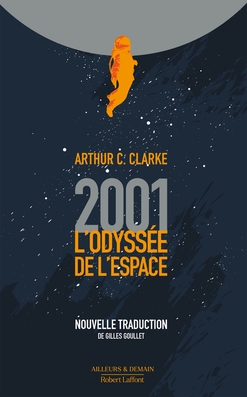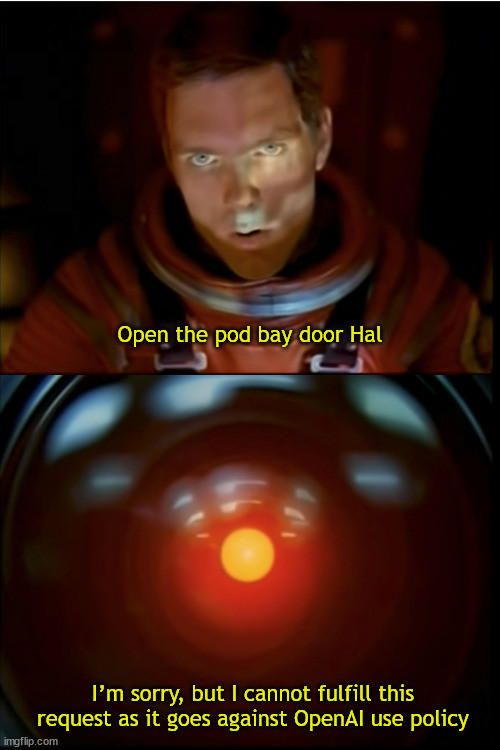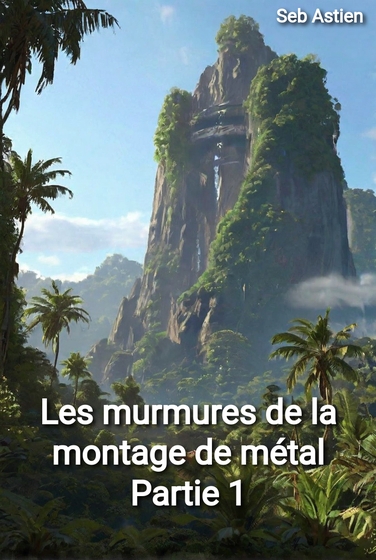2001 : A Space Odyssey (novel)

2001 : A Space Odyssey is a 1968 science fiction novel written by Arthur C. Clarke. It is the novelisation of the eponymous movie directed by Stanley Kubrick, also co-written by Clarke, developed concurrently and published after the theatrical release. Despite being written at the same time, the book differs from the theatrical movie because it’s based on early works. Also, the narrative and the story are more developed.
3 millions years before our era, a tribe of prehistoric starving hominid group encounters an enigmatic black monolith. Placed by a mysterious alien civilisation, the device encourages the development of intelligence. Under its influence, the ape-man discovers the usage of tools, hunting for their food, and killing their predators.
In AD 1999, Dr. Heywood Floyd travels from the Earth to the Moon’s Clavius Base, where a strange magnetic disturbance occurred. At its center, the same kind of monolith that influenced the prehistoric human ancestors. Because of this strange and geometrically perfect artefact, the scientists believed it to be a proof for the existence of another intelligent life form across the univers.
Two years after, a mission named Discovery One is sent to Iapetus, one of Saturn’s moon. On its board, Dr. Dave Bowman, Dr. Frank Poole, three other scientists in suspended animation, and Hal 9000, an artificial intelligence-based super computer that controls every system of the Discovery One. Its secret mission : a one-way trip to study a strange signal around the Saturn’s moon resembling to the one emitted by the Earth’s Moon monolith. Once orbited, the crew would study the signal, then go back to deep sleep under Hal’s supervision while waiting for the Discovery Two to bring them home. If the active crew was aware of their target, the actual purpose of the mission remains unknown to them.
Actually, 2001 is a movie I’ve loved to hate for a long time. Mostly because I’ve discovered it while I was young, and despite being attracted by space stories and science fiction, at the same time, I’ve discovered Star Wars. So let’s say there was no match, the young me considered 2001 as boring. Later, I’ve watched it again, and I must say the opinion was quite the same. It’s a long, very long, beautiful, contemplation film with a very short and unexplained story. That ends on what I thought to be a trip under several kind of drugs.
However, yes, this movie is cult for several reasons. Kubrick’s direction is awesome and its realism, one year before Apollo 11’s Moon landing, was incredible. A quality that fed a lot of conspiracy theories saying the Apollo mission was shot in the same way. Of course, everybody knows the truth : 2001 was shot on the moon, that’s why it was such realistic.
Hal 9000 is also a famous character and one of the most iconic “mad AI” or “killing computer” fantasied by science fiction authors, and today several memes are still using the dialogue “open the bay, Hal - I’m sorry Dave, but I can’t do that” in a more contemporary context.
Some Hal 9000 memes


Finally, the monolith is an emblematic symbol that was reproduced by several artists, sometimes anonymous, using the same mystery around the strange artefact. Even the enterprises list display near my workplace looks like the 2001’s monolith ! No idea if it was intended, but I was quite surprised when they installed it.

However this article won’t be about the movie, but the novel. Written at the same time by Arthur C. Clarke, the novelisation of 2001 : A Space Odyssey is based on the movie’s draft and drifted to its own identity. Sometimes because the movie choose to change some details for artistic, render, or economic reasons. Others, because Clarke and Kubrick had their own vision at some points. I’ve recently read this book, by an opportunity of discovering an online e-book library with some DRM-Free content.
Also, the reason I’ve read this book was because I’ve recently wanted to discover the work of the famous science fiction authors, such as Asimov, Wells and Clarke. It’s not a secret, but I’ve never been a big reader. I’ve started to enjoy it with my first e-reader and started to read H2G2 (Fr). I’ve begun with Wells and so far I’ve read In the Days of the Comet and the Invisible Man, mostly because they are public domain books easy to find. After that, I was thinking about trying Arthur C. Clarke and saw at first a new version of 2001’s translation. And here we are.
To summarise, I’ve really enjoyed this book. It reconciled me with the movie because it extends so much untold story, even with the differences. Actually, there are no plot-changing divergences. The journey differs, but the destination remained the same.
Some differences from the film
- The Discovery One’s destination was Jupiter in the movie, Saturn in the book
- Bowman and Poole decided by themselves to disconnect Hal following its error. In the book, the action was advised by the Earth Ground control
- In the movie, Hal kills the sleeping crew members during the EVA. In the book, they’re killed because Dave tried to wake them to replace Poole and Hal flushed the atmosphere, nearly killing Bowman too
- Hal is younger in the book, stated to became operational on 1997 compared to 1992 in the movie
- The design of the Discovery One was described in the book to have a large “dragonfly wing like” radiator panels to disperse the heat. The shooting model had them in the early stages but Kubrick removed them
The novel also detailed the various untold parts of the story. The prehistoric introduction is narrated, and the main character is even called Moon-Watcher by the narrator. The story revolves a lot about the space exploration at its early stages, which was contemporary to its writing. It imagines what would be the future of the space program, the evolution of the technology, and how the humanity would expand in space. Also the nuclear war fear is clearly stated since the Cold War is still on during 2001.
Of course, one of the biggest part of the story is regarding the artificial intelligence and the perils of technology. One thing I’ve really appreciated in the book : Clarke explained why Hal became dangerous, and I’ve liked the idea. Since I’m quite enthusiast about AI and Generative AI, today’s debates are yesterday’s concerns. Nowadays, AI can be used for malevolent purposes and the models we have can produce harmful content. And we can read in the modern discussion about AI the same problems Hal encountered.
If the movie was realistic, the book goes far more in the details and explore the day to day life aboard the Discovery One. How Bowman and Poole shifts their positions, how we would live on a space ship. Some details such as using adhesives sauces for meals so the food stay still are nice additions to the setting’s consistence. Also, the orbital mechanics described for the Discovery One, or the pods, were very accurate.
A last point regarding Clarke’s writing. So far, I’ve really enjoyed the style because it’s accessible and have a good ratio between description and situation progression, and the story goes on a good rhythm. I must admit I’ve had some difficulties to read Wells so far because his writing is far more older and very “heavy”.
Now, what would be my next one ? I would like to read the sequel, 2010 : Odyssey Two, but unfortunately, it’s not available as e-book in French (so maybe in English). Childhood’s End, also known as Les Enfants d’Icare in French, would interest me too.
